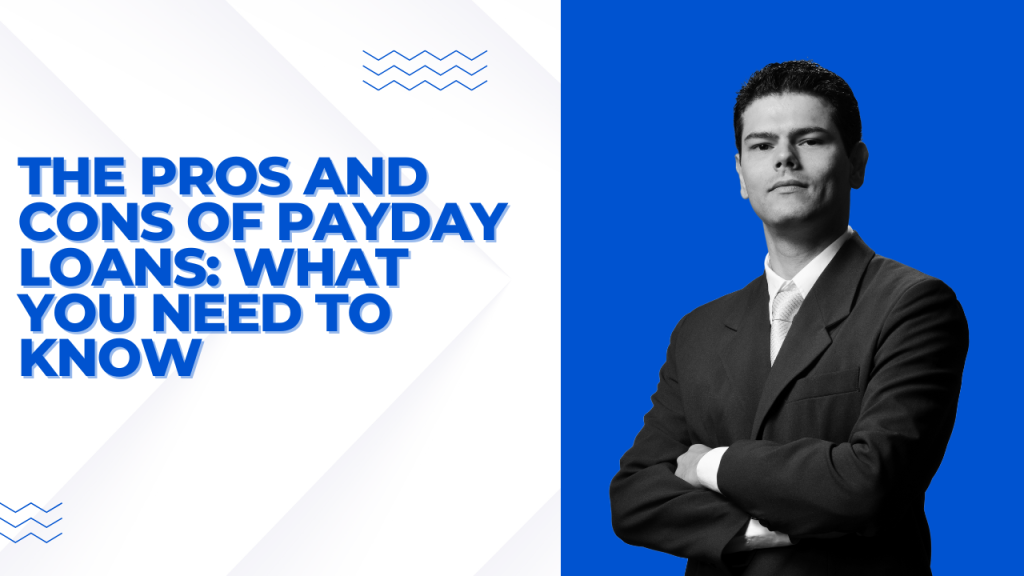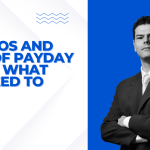Payday loans are short-term, high-interest loans designed to bridge cash gaps until your next paycheck. While they can be a quick fix for emergencies, they come with significant risks. Here’s an unbiased breakdown of their pros and cons to help you decide if they’re right for you.

Pros of Payday Loans
- Quick Access to Cash
- Instant Approval: Most lenders approve applications within minutes, and funds are often deposited the same day.
- No Collateral Needed: Unlike traditional loans, payday loans are unsecured, so you don’t risk losing assets like your car or home.
- No Credit Check Required
- Ideal for borrowers with poor or no credit history, as lenders typically don’t run hard credit checks.
- Minimal Requirements
- You usually only need proof of income, a bank account, and a valid ID to qualify.
- Short-Term Commitment
- Repayment is due in 2–4 weeks (on your next payday), so you’re not locked into long-term debt.
Cons of Payday Loans
- Exorbitant Interest Rates
- Example: A $500 payday loan with a $75 fee equates to an APR of 391% if repaid in 2 weeks.
- Rates are far higher than credit cards (15–30% APR) or personal loans (5–36% APR).
- Debt Trap Risk
- If you can’t repay on time, lenders may offer to “roll over” the loan, adding new fees. This creates a cycle of debt:
- Borrow $500 → Pay $575 → Borrow $575 → Pay $661 → Repeat.
- Predatory Lending Practices
- Some lenders target low-income communities or financially vulnerable individuals.
- Hidden fees, aggressive collection tactics, and unclear terms are common.
- No Credit-Building Benefit
- Timely repayments rarely improve your credit score, but missed payments can damage it.
When to Avoid Payday Loans
- You’re unsure about repaying on time.
- You need the loan for non-urgent expenses (e.g., vacations, gadgets).
- You’re already in debt.
Safer Alternatives to Consider
- Emergency Savings Fund
- Aim to save 3–6 months’ worth of expenses to avoid borrowing.
- Credit Union Loans
- Many offer small-dollar loans with APRs capped at 28%.
- Payment Plans
- Negotiate with utility companies, landlords, or medical providers for extended deadlines.
- Personal Loans
- Banks or online lenders (e.g., Upstart, LendingClub) offer lower APRs for better credit scores.
- Ask Family/Friends
- Borrow interest-free with a clear repayment plan to avoid strained relationships.
Key Questions to Ask Before Taking a Payday Loan
- What’s the APR? (Calculate it here).
- Can I repay this without sacrificing essentials like rent or groceries?
- Are there cheaper alternatives?
Real-Life Example: The Cost of Convenience
Sarah needed $400 to fix her car. She took a payday loan with a $60 fee. When she couldn’t repay in 2 weeks, the lender rolled over the loan twice, adding $120 in fees. She ultimately paid $580 to borrow $400.
Regulations to Know
- U.S.: The CFPB enforces rules limiting lenders from debiting accounts after two failed attempts.
- UK: Payday loan APRs are capped at 0.8% per day.
- Canada: Rates vary by province; some ban payday loans entirely.
Final Verdict
Payday loans are a last-resort option for emergencies only. Their convenience comes at a steep price, and the debt cycle can devastate finances. Always explore alternatives first and borrow responsibly.
Need help? Contact nonprofit credit counseling agencies like the National Foundation for Credit Counseling.









